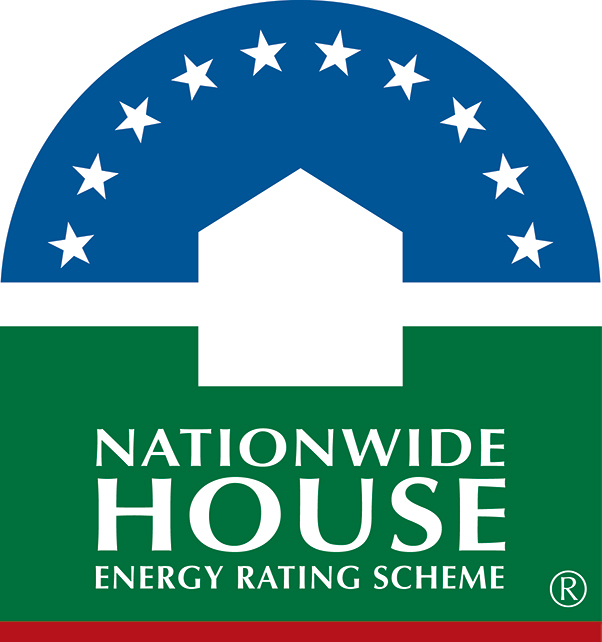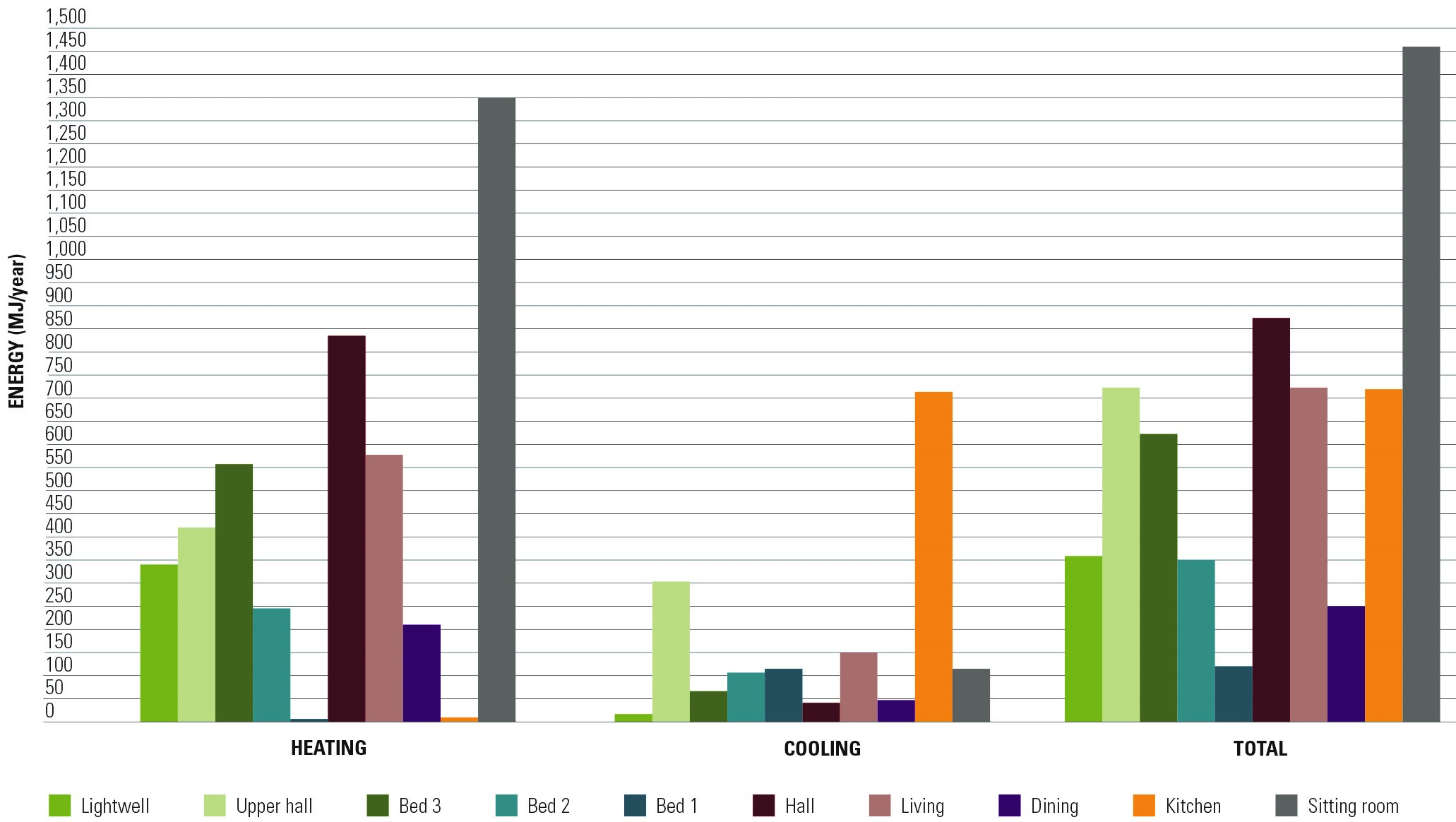Key points
- Australia has various building rating systems.
- The rating systems are used to assess energy efficiency and other aspects of sustainability for existing buildings or new building designs. Some rating systems assess building components.
- Using a rating system can help you to ensure that the home you buy, renovate, or build is comfortable and energy efficient.
- A Nationwide House Energy Rating Scheme rating is the most common way for new homes to meet the minimum energy efficiency requirements of the National Construction Code (NCC).
- Some of the rating tools are free and relatively easy to use, while others require specialised software and are designed for use by professionals or an accredited energy assessor.
- An accredited energy assessor can provide a rating to meet NCC requirements, and can also add value to your planning with professional advice on improving the energy efficiency of your home.
Building rating systems used in Australia
Rating tools can help you incorporate sustainability and energy-saving features into your home. Some tools allow you to model your home or to test how various changes will affect the rating. Some have been developed by governments, others by industry bodies or private companies.
Nationwide House Energy Rating Scheme
Nationwide House Energy Rating Scheme (NatHERS) assessments provide ratings of the energy performance of new free-standing homes, townhouses and apartments, based on their designs. The more stars, the better the performance.
These ratings include:
- a ‘thermal’ star rating out of 10 that indicates the thermal performance of the building, based on the amount of heating and cooling required to keep it at a comfortable temperature
- a ‘Whole of Home’ rating out of 100 that provides information about the expected energy use of the home, taking into account the home’s thermal performance, major fixed appliances (for example, hot water system, heating and cooling appliances, lighting, and pool and spa pumps), and onsite renewable generation and storage.
NatHERS ratings are the most common way for new homes, townhouses, and apartments to meet the minimum energy efficiency requirements of the NCC. They may also be used to identify how to maximise the thermal performance of a house design. CSIRO has developed a dashboard to show average NatHERS thermal star ratings across the states and territories.
By mid-2025, NatHERS will expand to offer energy performance ratings for existing homes. This will give homeowners information on how energy-efficient their home is and help identify cost-effective upgrades.
NatHERS rating tools
Four software tools are accredited to conduct NatHERS thermal and Whole of Home ratings: AccuRate, BERS Pro, FirstRate5, and HERO. The tools are based on a calculation engine developed by the CSIRO that can predict the temperature inside a building on an hour-by-hour basis for a whole year, based on its size, building materials, insulation levels, type and placement of windows, orientation, and climate zone.
The software makes standard assumptions about occupant behaviour to predict the heating and cooling load needed to maintain a comfortable temperature all year round. Included in the calculation engine are regional climate data and the thermal properties of all major materials. The NatHERS tools can model the complex effects of building mass, roof types, and many other factors, including levels of insulation, window size, and shading.
NatHERS thermal performance ratings do not include the embodied energy of building materials. The actual amount of gas or electricity used for heating and cooling is influenced by the behaviour of the occupants, quality of construction and efficiency of appliances, in addition to the thermal performance of the building.

NatHERS tools can be used during the design process, or to diagnose thermal discomfort issues in an existing home if sufficient building information is available. This can be done at a building-envelope scale or room-by-room scale in both new homes and renovations. This feature allows a designer to identify rooms that may perform poorly under certain weather conditions, so that they can be modified to improve comfort. Designers may vary the building shape, window size and location, shading or construction materials to optimise the performance of the design.
Source: Adapted from Deslisle Hunt Wood
Accredited assessors
Anyone can buy and use the NatHERS tools to better understand the energy efficiency of a home design. You can also employ a NatHERS accredited assessor to produce certified NatHERS ratings or provide energy efficiency-related building design advice.
National requirements for NatHERS assessments have been developed to facilitate consistency in entry and rating outputs, and NatHERS accredited assessors must abide by these requirements. A certified national training course for assessors (Certificate IV in NatHERS Assessment) has also been established, which adds to the robustness and quality of ratings from NatHERS accredited assessors.
Find contact details for accredited assessors in your area from the Australian Building Sustainability Association, Design Matters National, and House Energy Raters Association.
National Australian Built Environment Rating System
The National Australian Built Environment Rating System (NABERS) provides simple, reliable and comparable sustainability measurement across commercial and apartment buildings. NABERS rates non-residential buildings such as office buildings and office tenancies, hotels, shopping centres, data centres, public hospitals, warehouses, and cold stores. It overlaps with residential energy efficiency through its rating of residential aged care, retirement living and apartment buildings.
NABERS ratings cover energy, water, waste and the indoor environment by comparing performance to that of an average building with similar, benchmarked attributes. It supplies a rating out of 6 stars and identifies areas for savings and improvements in efficiency and environmental performance.
NABERS ratings are valid for 12 months to ensure they represent current operational performance and are based on 12 months of historical data.
NABERS for apartment buildings rates the shared services and common areas of apartment buildings (lifts and lobbies, pools, gyms and car parks, as well as water consumption in some cases) but not the apartments themselves. This application follows the standard NABERS star rating system and is designed to encourage building owners or owners corporations to make building improvements to increase their rating by helping them identify areas for savings and improvements.
Building Sustainability Index
The New South Wales Government’s Building Sustainability Index (BASIX) establishes minimum standards for all new freestanding houses, multi-dwellings and alterations and additions to existing dwellings in the state.
BASIX is applied through a New South Wales planning regulation that sets percentage reduction targets for greenhouse gas emissions and water use for dwellings of a similar type in the same geographical location. BASIX also sets a minimum level for building envelope thermal performance and covers a wide range of household energy uses by fixed equipment such as heating and cooling appliances, lighting, and hot water.
BASIX is a web-based tool that is available for use by anyone, although users must register and log in. The data that needs to be entered into the program include the location, size, building materials, appliance and equipment selection, and design of the building. BASIX analyses these data and determines how the data score against prescribed energy and water targets. The home design must pass specific targets – which vary according to location and building type – before a BASIX certificate can be generated. The BASIX certificate is lodged with your development application to your local council for approval, and is later lodged with your construction certificate and occupation certificate. A building that will meet the Passive House standard can use the Passive House Planning Package (PHPP) modelling to demonstrate compliance with BASIX for thermal comfort.
In New South Wales, the online BASIX system replaces the NCC energy efficiency requirements. BASIX accepts NatHERS software results as one way of meeting its separate targets for the heating and cooling performance of the building.
Residential Efficiency Scorecard
The national Residential Efficiency Scorecard is a voluntary energy performance rating tool for existing homes. The Scorecard rates your home’s energy use and comfort, and provides targeted recommendations for improvements. The Scorecard assessment will help you make the best choices to ensure that any money you spend on upgrades will lead to a cheaper to run, more comfortable home.
Scorecard assessors visit your home to assess its energy performance. Outcomes of the assessment include:
- a Scorecard certificate with a star rating out of 10 indicating the cost to run the fixed appliances in the home
- a comfort rating (in both hot and cold weather),
- a summary of the main factors influencing energy consumption
- suggestions for upgrades to improve the home's energy efficiency.
The Scorecard is endorsed by NatHERS. However, the Scorecard cannot currently provide a NatHERS assessment.
NatHERS endorsement provides an early indication that the Scorecard demonstrates alignment with what NatHERS assessments of existing homes are expected to require in the future. Some amendments are expected as NatHERS requirements for existing homes are agreed and finalised. To be accredited under NatHERS, the Scorecard will need to meet all these requirements.
The Scorecard program, including the assessment tool, assessor training and assessor accreditation, and ongoing quality assurance, is delivered by the Victorian Government on behalf of all Australian governments.
Green Star
Green Star is a certification program developed by the Green Building Council of Australia (GBCA) to assess and recognise sustainable building practices. It is a voluntary rating system that evaluates the environmental and sustainability performance of buildings and communities in Australia.
The Green Star rating system considers various aspects of a building's design, construction, and operation, including energy efficiency, water usage, indoor environmental quality, materials selection, waste management, and innovation. Projects are awarded points based on their performance across a range of categories, and a final rating is given, up to 6 stars, with 6 stars representing world leadership in sustainable building practices.
Passive House
Passive House or Passivhaus as it is known in German, is a design standard that requires appropriately insulated, airtight buildings with mechanical heat recovery ventilation .The definition of a Passive House is ‘a building, for which thermal comfort (ISO 7730) can be achieved solely by post-heating or post-cooling of the fresh air mass, which is required to achieve sufficient indoor air quality conditions – without the need for additional recirculation of air’.
The Passive House Institute (PHI) administers an international certification scheme, carried out by a PHI-approved Passive House Certifier.
Living Building Challenge
The Living Building Challenge was first launched in 2006 by the International Living Future Institute. It requires buildings to mitigate all of their environmental impacts and give more than they take from the world.
The criteria are place, energy, water, health and happiness, materials, equity, and beauty. Unlike many tools, certification is achieved only when all the criteria have been met, rather than a points-based system. Several of the criteria (energy, water) require the building to be operational for at least a year to prove that it does achieve their performance targets.
Projects certified under the Living Building Challenge in Australia can be viewed online.
WELL Building standard
The WELL Building standard was developed by the International WELL Building Institute in the United States. It focuses on the health and wellbeing aspects of buildings and is mainly used as a rating tool on commercial buildings. The design criteria are broad, from indoor air quality and thermal comfort to credit for encouraging healthy eating in the workplace.
Window Energy Rating Scheme
The Window Energy Rating Scheme (WERS; rates windows, window films, skylights and glazed doors for their energy performance, based on the solar, thermal and optical properties of the glazing unit and frame. These properties are determined by a combination of laboratory measurements and computer simulations.
Products rated in WERS earn from 0 to 10 stars for cooling (summer) and heating (winter), depending on how they rank against the alternatives. WERS also provides performance values which include U value, solar heat gain co-efficient (SHGC), light transmittance, and air infiltration rate (see Glazing in the Passive design section). The ratings apply to the effect of the whole assembly including the relative contributions of glass and frame. The rating information can be used in energy rating tools, such as NatHERS, to estimate the actual impact on performance for any house. The WERS Certified Product Hub allows for filtered searching to find the window performance that best suits your needs.
WERS is managed by the Australian Glass and Window Association (AGWA), which is made up of window manufacturers and industry suppliers throughout Australia. It is an accredited member of the Australian Fenestration Rating Council.

Interpreting ratings
There are some things to consider in interpreting building or product ratings.
- Is the rating of a building element, such as a window, a true representation of its performance in the real world?
No. The performance of a building element needs to be considered in context. For example, in a warm climate, a WERS 5-star rated window with no shading will cause more overheating in summer than a similar sized 0-star rated window with well-designed shading. This is because effective shading blocks out more radiant heat. - Is the rating of a whole building a true representation of its performance in the real world? Not necessarily. Some tools (known as predictive tools) predict the energy use of a building, and some tools rate the actual energy use. Predictive tools can be used for regulatory purposes before a building is built, but they may not be as good at predicting actual energy use after the building is built, because they do not account for the differences in how people use and occupy their home.
- Does the rating system address relative size in assessing the overall impact?
No. A 400m2 home and a 150m2 home may have the same star rating. However, the larger home will use more resources and embodied energy in its construction than the smaller home. Note that tools such as NatHERS, NABERS, and BASIX do not consider embodied energy. The larger home will also require more heating and cooling energy to be comfortable. - Do building ratings take into consideration all the environmental impacts?
No rating tool can incorporate every environmental impact and some incorporate a broader range of impacts than others, but better ratings will generally lead to better environmental outcomes. Try to also consider those environmental aspects that may not be easy to measure, such as embodied energy. For example:
– Many ‘low embodied energy’ solutions may have higher embodied energy than realised (for example, blending cement into mud brick or rammed earth walls dramatically increases their embodied energy). Some low-embodied-energy systems require high-embodied-energy foundations or structural components.
– Features other than the building, such as paved driveways, may add substantial embodied energy.
– It is possible to select lower embodied-energy products within each material type (for example, bricks made in energy-efficient kilns or recycled bricks, or concrete that includes blast furnace slag or other ‘extenders’). Refer to Embodied energy in the Materials section.
References and additional reading
- Australian Passive House Association.
- Australian Government Department of the Environment, Water, Heritage and the Arts (2008). Energy efficiency rating and house price in the ACT: modelling the relationship of energy efficiency attributes to house price – the case of detached houses sold in the Australian Capital Territory in 2005 and 2006, Department of the Environment, Water, Heritage and the Arts, Canberra.
- CSIRO, Australian Housing Data Portal
- CSIRO, Energy Efficient Living Research
- Green Building Council of Australia, What is Green Star?
- Living Future Institute Australia, Living Building Challenge.
- Nationwide House Energy Rating Scheme (NatHERS), Software accreditation protocol.
- NatHERS (Nationwide House Energy Rating Scheme), Explaining NatHERS [YouTube video].
- NSW Government Planning Portal, BASIX.
- Passive House Institute.
- Victorian Energy Saver, Get a home energy assessment.
- WELL.
- Window Energy Rating Scheme.
Learn more
- Explore Design for climate to find out how your home can best suit your location.
- Read Passive heating and Passive cooling for tips on designing your home to work well in winter and summer.
- Read Materials for ideas on materials for new home construction.
Authors
Original authors: Chris Reidy, Chris Reardon, Geoff Milne 2013
Updated: Andy Marlow 2020, Department of Climate Change, Energy, the Environment and Water 2023




